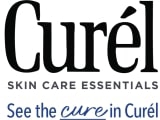Skin Allergen Guide

Do you sneeze, itch, or even get a rash sometimes—and you don't know the reason for it? A skin allergy may be the cause.
A PATCH TEST is the only way to precisely and positively determine what you may be allergic to. In patch tests, a medical professional applies small amounts of common allergens to the skin on strips of tape, which are removed after two days. A second reading is sometimes done two days later. A positive allergy test shows up as a small red spot.
These tips can help you recognize certain reactions to some common allergens. Always consult your physician about any ongoing skin condition.

I get an itchy, red rash from wearing a watch, jewelry, or belt buckle or after using a metal eyelash curler.

Gold is a common allergen, regardless of quality (even 21 Karat will give you trouble if you're allergic to it). Additionally, nickel is found in many substances: jewelry, clasps, some buttons on clothing, and even some gold jewelry. Nickel is commonly used in metal alloys, including chrome-plated objects. Note that while stainless steel also contains nickel, the process that bonds the two metals together can mean that a nickel-sensitive person will not have issues with a stainless steel product.
Cobalt chloride, a metal found in medical products; hair dye; antiperspirant; objects plated in metal such as snaps, buttons or tools; and in cobalt blue pigment, is another fairly common substance that can produce allergic reactions.

I get a rash or have a reaction after using over-the-counter topical antibiotics.

Check ingredient lists for the antibiotic, neomycin, a common allergen found in both prescription and non-prescription topical antibiotic creams, ointments, lotions, ear drops, and eye drops. Neomycin may also appear in combination with topical steroids, and other antibiotics such as triple antibiotic first aid creams. Treating cuts, abrasions, and rashes with over-the counter neomycin-containing creams can result in neomycin-induced dermatitis for those individuals with this sensitivity.
Two other common allergens are thimerosal, a mercury compound used in local antiseptics and as a preservative in some vaccines, and bacitracin, a topical antibiotic. You may want to look at the ingredient lists of any topical antibiotics that you use to see if either is present if you are experiencing allergic-type reactions.

I get an itchy, red rash after using perfume or my skin is sensitive to certain cosmetics, soaps, or skin lotions.

Some people are sensitive to the fragrance chemicals. People with this allergy will want to look for fragrance-free products; "unscented" products may still have a masking fragrance added to cover up the smell of the chemicals. A specific ingredient to look for is balsam of Peru (myroxylon pereirae), a fragrance used in perfumes and skin lotions, that is derived from tree resin. You may only be allergic to this ingredient, but not to all fragrances.

I get a rash from fabrics like wrinkle-free garments or have an eyelid reaction after using contact lens solution.

While preservatives are needed to prevent products from spoiling, certain ones can be problematic. Two common culprits are formaldehyde, found in paper products, paints, medications, household cleaners, cosmetic products, and fabric finishes, and Quaternium 15, which may be found in cosmetic products such as shampoo, nail polish, and sunscreen or in industrial products such as polishes, paints, and waxes.



